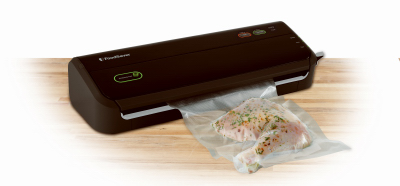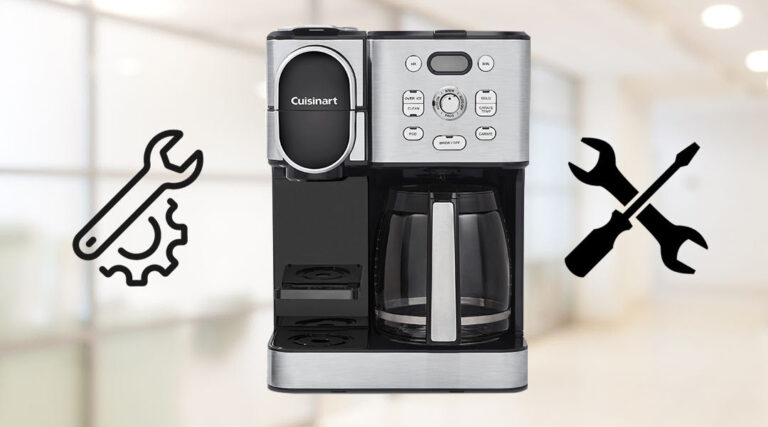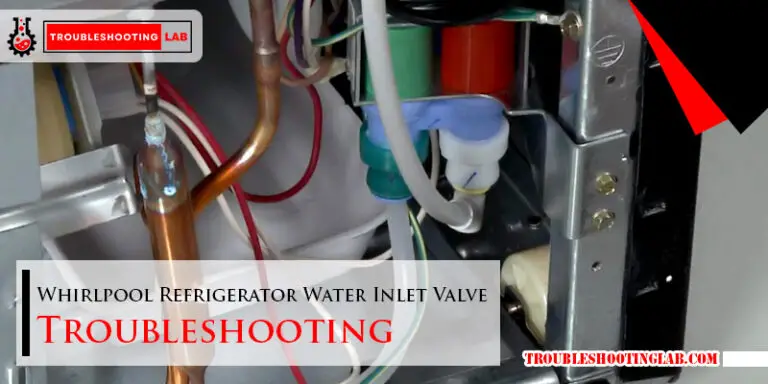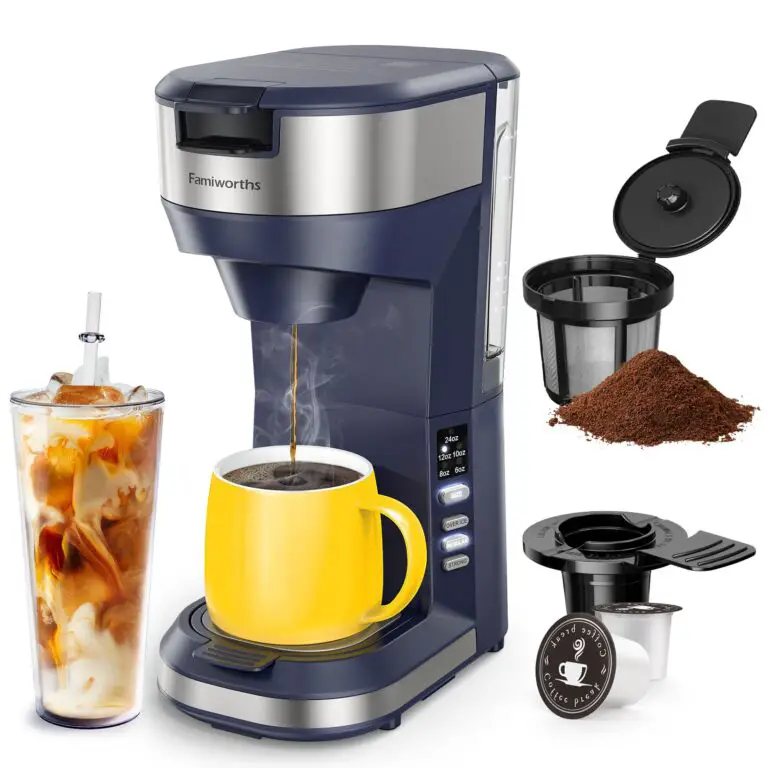Foodsaver Troubleshooting: Quick Fixes for Common Issues
If your Foodsaver isn't sealing, check the gasket and ensure the bag is correctly positioned. Ensure the machine is properly locked.Foodsaver vacuum sealers are a popular choice for preserving food freshness. These devices extend the shelf life of food by removing air, which helps prevent spoilage. Despite their reliability, users may encounter issues that hinder optimal performance. Common problems include sealing failures, air leaks, and overheating.
Troubleshooting these issues can often be straightforward and quick, ensuring your Foodsaver operates efficiently. Regular maintenance and proper usage are key to avoiding most problems. Understanding common troubleshooting steps can save time and extend the life of your Foodsaver. This guide will help you address frequent issues and keep your Foodsaver running smoothly.
Introduction To Foodsaver

FoodSaver is a popular brand known for its vacuum sealing systems. These devices help keep food fresh longer by removing air and sealing bags tightly. FoodSaver machines are perfect for preserving leftovers, bulk foods, and even delicate items like herbs.
Using a FoodSaver can save you time and money. It reduces food waste by keeping items fresher for longer. This blog will guide you through the benefits and common issues you might face.
Benefits Of Using Foodsaver
- Longer Shelf Life: Vacuum-sealed foods last much longer.
- Cost Savings: Buy in bulk and store for later.
- Less Waste: Keep leftovers fresh instead of throwing them away.
- Convenience: Pre-portion meals for quick cooking.
- Food Safety: Protects food from mold and bacteria.
Common Issues Encountered
| Issue | Possible Cause | Solution |
|---|---|---|
| Sealing Strip Not Heating | Power Issue | Check the power cord and outlet. |
| Bags Not Sealing Properly | Moisture or Food Particles | Clean the sealing area and try again. |
| Vacuum Not Strong Enough | Leak in the Bag | Use a new bag or check for holes. |
| Machine Not Turning On | Faulty Power Source | Test with a different outlet or check the fuse. |
Power Problems
Experiencing power problems with your Foodsaver can be frustrating. These issues can prevent you from sealing your food properly. Below, we address two common power problems: the device not turning on and intermittent power supply. Follow these tips to troubleshoot and resolve these issues.
Device Not Turning On
When your Foodsaver device does not turn on, it could be due to a few reasons. First, check the power cord. Ensure it is securely plugged into the outlet. Sometimes, the cord might be loose or damaged.
- Check the outlet: Plug another device into the same outlet to see if it works. If not, the outlet might be faulty.
- Examine the cord: Look for any visible damage or fraying. A damaged cord can prevent power from reaching the device.
- Power switch: Make sure the power switch on the device is turned on.
If all these steps fail, the issue might be internal. In this case, contacting Foodsaver support for further assistance is advisable.
Intermittent Power Supply
An intermittent power supply can disrupt the sealing process. This issue often arises due to poor connections or internal faults. Here are some steps to diagnose and fix this problem:
- Inspect the power cord: Check if it is tightly connected to both the device and the outlet.
- Check for overheating: Sometimes, the device might shut off due to overheating. Give it some time to cool down and try again.
- Examine the fuse: Some models have a fuse. Check if it needs replacement.
If you still face issues, the problem might be with the internal components. Contacting customer support would be the next best step.
Sealing Issues
Sealing issues with your Foodsaver can be frustrating. This section will help you fix common problems. Follow these steps to get your Foodsaver working perfectly again.
Seal Not Forming
Sometimes, the seal does not form properly. This can lead to food spoilage. Here are some common causes and solutions:
- Dirty Seal Bar: Clean the seal bar with a damp cloth.
- Overfilled Bag: Leave enough space at the top of the bag.
- Wrinkled Bag: Make sure the bag is smooth before sealing.
Leaking Seals
A leaking seal can cause the vacuum to fail. This can result in poor food preservation. Here are some tips to fix it:
- Check for Moisture: Make sure the bag is dry before sealing.
- Inspect the Seal Area: Look for any debris that might be causing leaks.
- Proper Bag Placement: Ensure the bag is correctly placed in the vacuum channel.
| Issue | Possible Cause | Solution |
|---|---|---|
| Seal Not Forming | Dirty Seal Bar | Clean the seal bar |
| Seal Not Forming | Overfilled Bag | Leave space at the top |
| Leaking Seals | Moisture in Bag | Dry the bag |
Vacuum Problems
Experiencing vacuum problems with your Foodsaver can be frustrating. Whether you’re dealing with a weak vacuum or no vacuum at all, these issues can hinder food preservation. Understanding the root cause is key to resolving these problems effectively.
Weak Vacuum
A weak vacuum can result in improperly sealed bags. This can lead to food spoilage. Check the following to identify the issue:
- Gasket Condition: Inspect the gasket for any signs of wear or damage. A damaged gasket will not create a tight seal.
- Bag Placement: Ensure the bag is placed correctly in the vacuum channel. Misalignment can cause a weak vacuum.
- Food Particles: Clean the sealing area thoroughly. Food particles can obstruct the vacuum process.
By addressing these factors, you can enhance the vacuum strength.
No Vacuum At All
If your Foodsaver is not creating any vacuum, a thorough check is needed. Consider these potential causes:
- Power Supply: Confirm that the device is plugged in and powered on. A faulty power supply can halt operation.
- Seal Strip: Examine the seal strip for any damage or misplacement. A damaged seal strip can prevent vacuum formation.
- Vacuum Pump: Listen for the sound of the vacuum pump. If it’s silent, the pump might be defective.
Table for quick reference:
| Problem | Possible Cause | Solution |
|---|---|---|
| Weak Vacuum | Worn Gasket | Replace Gasket |
| No Vacuum | Power Issue | Check Power Connection |
Address these issues to restore your Foodsaver’s functionality effectively.
Bag Problems
Bag problems are common with Foodsaver machines. These issues can disrupt the sealing process. Below are some common problems and how to fix them.
Bag Not Sealing
If your bag is not sealing, check for wrinkles. Wrinkles can prevent a proper seal. Smooth out the bag before sealing.
Another reason could be food particles. Make sure the sealing area is clean. Wipe it with a dry cloth.
| Problem | Solution |
|---|---|
| Wrinkles | Smooth out the bag |
| Food particles | Clean the sealing area |
Bag Punctures
Bag punctures can spoil your food. Inspect the bag for sharp objects. Remove any bones or hard items.
Sometimes, the bag itself may be defective. Use a new bag if you find punctures.
- Inspect for sharp objects
- Remove hard items
- Use a new bag if needed
These tips can help solve common bag problems with your Foodsaver. Keep your food fresh and avoid spoilage with these simple fixes.
Maintenance Tips
Maintaining your Foodsaver device ensures it works efficiently for a long time. Proper care can prevent common issues and extend the lifespan of your machine. Below, you’ll find some essential maintenance tips to keep your Foodsaver in top shape.
Cleaning The Device
Regular cleaning is crucial for optimal performance. Here’s how to do it:
- Unplug the device before cleaning.
- Wipe the exterior with a damp cloth.
- Use mild soap for stubborn stains.
- Remove and wash the drip tray with warm, soapy water.
- Dry all parts thoroughly before reassembly.
Cleaning the sealing strip is also important. Use a soft, damp cloth to wipe away any food particles. Always ensure the strip is completely dry before using the machine again.
Replacing Parts
Over time, some parts of your Foodsaver may need replacing. Common parts include:
- Sealing Strips: Replace if they become worn or cracked.
- Gaskets: Check for wear and tear. Replace if necessary.
- Drip Trays: Replace if they show signs of damage.
Follow these steps to replace a part:
- Unplug the device.
- Remove the old part carefully.
- Install the new part according to the manual.
- Test the machine to ensure proper installation.
Regularly inspecting and replacing worn-out parts can prevent bigger issues. This helps keep your Foodsaver working efficiently.
Advanced Troubleshooting
When dealing with advanced troubleshooting for your Foodsaver, understanding error codes and seeking technical support can make a significant difference. These steps will help you identify and solve complex issues efficiently.
Error Codes
Error codes are essential for diagnosing your Foodsaver’s issues. Each code indicates a specific problem. Refer to the user manual to decode these error messages.
| Error Code | Meaning | Solution |
|---|---|---|
| E01 | Seal Failure | Check the sealing strip for damage. |
| E02 | Vacuum Failure | Ensure the bag is properly placed. |
| E03 | Overheating | Allow the machine to cool down. |
Technical Support
If you cannot resolve the issue, contact Foodsaver’s technical support. They provide expert help and guidance.
- Visit the official Foodsaver website.
- Navigate to the support section.
- Fill out the contact form with your issue.
- Call the customer service number for immediate help.
Having your model number and error code ready will speed up the process. The technical team can offer solutions tailored to your issue.
Preventive Measures
Taking preventive measures ensures your Foodsaver works efficiently. Proper care extends its life and enhances performance. Below are key steps to maintain your Foodsaver.
Proper Storage
Store your Foodsaver in a cool, dry place. Avoid direct sunlight to prevent damage. Always keep it on a flat, stable surface. Use a dedicated cupboard or shelf for safety.
- Keep away from heat sources.
- Ensure it’s always dry before storing.
- Avoid stacking heavy items on top.
Regular Maintenance
Regular maintenance keeps your Foodsaver in top shape. Clean it after each use with a damp cloth. Check the sealing strip for debris.
- Unplug before cleaning.
- Use mild soap and water.
- Dry thoroughly before storing.
Inspect the vacuum channel for blockages. Replace worn-out parts promptly. Follow the manufacturer’s instructions for optimal care.
| Part | Maintenance Frequency |
|---|---|
| Sealing Strip | Every 3 months |
| Vacuum Channel | Every use |
Frequently Asked Questions
Why Is My Foodsaver Not Working?
Your FoodSaver may not be working due to a broken seal, clogged vacuum channel, or power issues. Ensure proper bag placement. Check the gasket and make sure it’s clean and intact. Ensure the lid is closed tightly.
Where Is The Reset Button On The Foodsaver?
The FoodSaver does not have a reset button. To troubleshoot, unplug it for 20 seconds, then plug it back in.
Why Is My Vacuum Sealer Not Sealing After Vacuuming?
Your vacuum sealer might not seal due to a dirty sealing strip, worn-out gaskets, or a full vacuum bag. Clean and check parts.
Why Is My Vacuum Packaging Machine Not Sealing?
Your vacuum packaging machine may not seal due to a faulty heating element, dirty sealing bar, or incorrect bag placement. Ensure proper maintenance and use compatible bags.
Why Is My Foodsaver Not Sealing Properly?
Check the sealing strip for debris. Clean and ensure it’s placed correctly.
Conclusion
Mastering Foodsaver troubleshooting can prolong the life of your vacuum sealer. Regular maintenance ensures optimal performance. Addressing common issues saves time and money. Always refer to the manual for specific guidance. With these tips, you can keep your Foodsaver running smoothly for years to come.
Happy sealing!





